The Best Medical Alert Watches of 2025, Tested by Caregivers
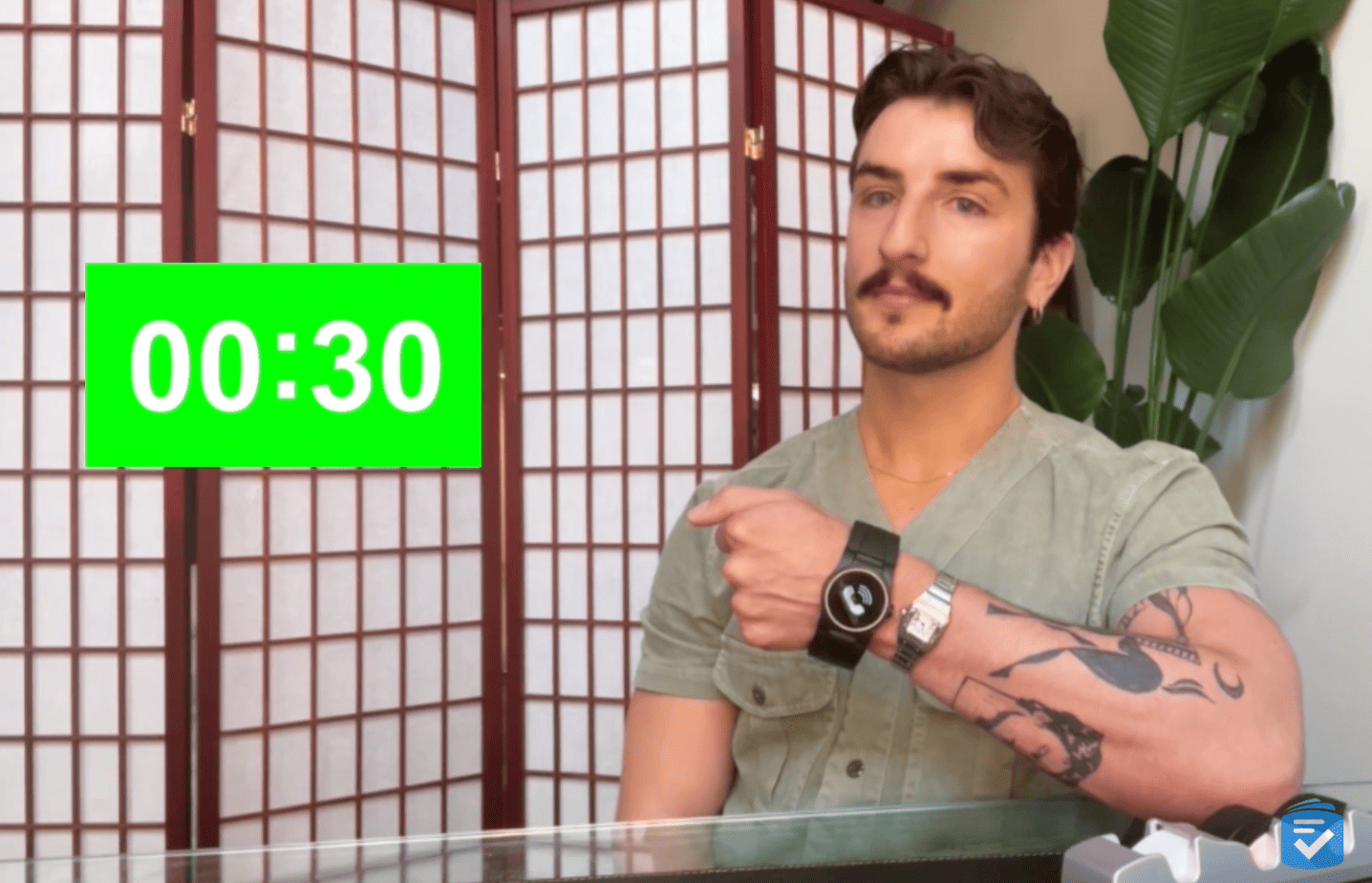
Key Findings
- At $39.95 per month, Bay Alarm Medical’s SOS Smartwatch provides exceptional value, and it performed reliably in our tests.
- The Medical Guardian MGMove performed the best in terms of response times; however, it lacks fall detection.
- The UnaliWear Kanega Watch demonstrated accurate fall detection as well as voice commands, a rarity for medical alert watches.

Why Trust TheSeniorList?
At TheSeniorList, our team of caregivers, experts, and healthcare professionals conducted over 5,000 hours of in-depth research and testing to recommend the most reliable brands and devices. In this process, our team:
- Tested 50 medical alert devices from 15 different brands.
- Surveyed 1,250 seniors and caregivers on medical alert system usage.
- Consulted with nurses, EMTs, and caregivers who are experts at caring for older adults.
- Published dozens of videos that demonstrate our medical alert system testing.
- Evaluated verified customer reviews of medical alert companies from the Better Business Bureau.
How We Test Medical Alert Watches
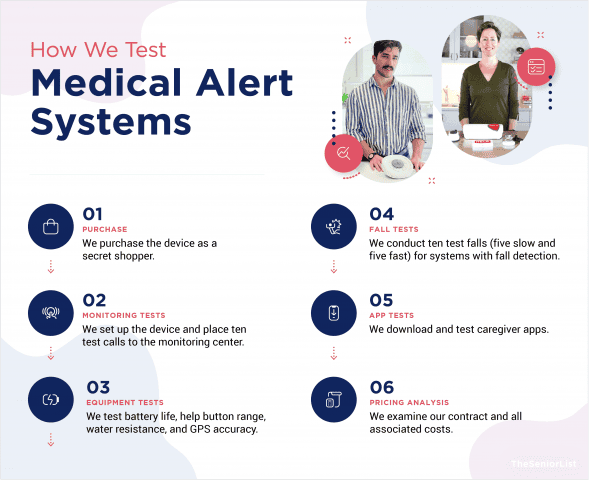
To create this list, we tested eight different medical alert watches. As we evaluated each one, here is what we looked for:
- Ease of use: For a medical alert watch to be effective, it needs to have simple controls so people of all experience levels can use it. Through touchscreens and buttons, every watch on this list proved simple and intuitive.
- Response times: Extra features aside, a medical alert watch must provide quick access to help. For each watch, we conducted ten test calls and calculated the mean average response time.
- GPS performance: Half of our urgent response test calls were performed outside of the home. This allowed us to test if monitoring agents could accurately report our location, an essential feature of GPS medical alert systems.
- Extra features: We gave extra points to watches that threw in features like voice commands, fall detection, and caregiver tracking.
- Pricing: Watches can be pricey compared to more affordable medical alerts, so we evaluated each watch in terms of its overall value, including costs for both the device and its monthly subscription.
>> Further Reading: Affordable Medical Alert Systems
The Best Medical Alert Watches for Seniors
- SOS Smartwatch : Best Budget Option
- MGMove Watch : Best Overall
- UnaliWear Kanega Watch : Best Fall Detection
Medical Alert Watches Compared
| Medical Alert Watch | Watch Cost | Subscription Cost | Average Response Time | Fall Detection |
|---|---|---|---|---|
| SOS Smartwatch | $199 | $39.95/mo | 16 seconds | $10/mo |
| MGMove | $199.95 | $42.95/mo | 10 seconds | Not available |
| Kanega Watch | $299.95 | $69.95/mo | 30 seconds | Included |
The Best Medical Alert Watches of 2025
1. SOS Smartwatch - Best Budget Option
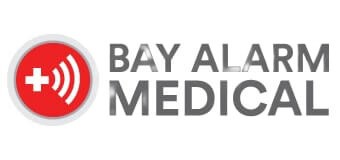
844-284-7976
What We Like Most:
- Simplified interface
- No smartphone necessary
- SOS button with two-way communication
Overview
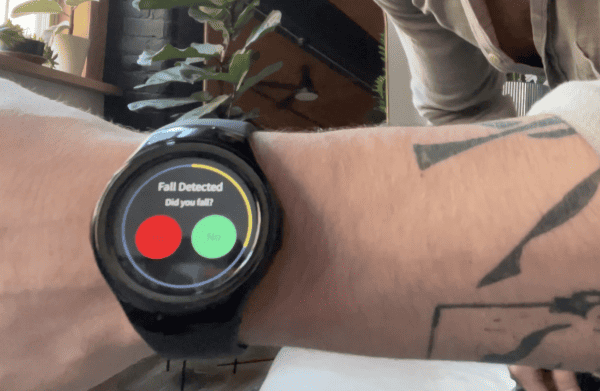
Cost: $199 equipment charge; $39.95 per month for monitoring
Battery life: 14 hours
Average response time: 21 seconds
The SOS Smartwatch from Bay Alarm Medical combines the convenience of a smartwatch with the safety of a traditional medical alert device. The watch features a large, easy-to-read touchscreen display and a dedicated SOS button that can be pressed to quickly connect with a 24/7 monitoring center.
>> Further Reading: Bay Alarm Medical Systems Review
Performance

The Bay Alarm Medical monitoring center was very reliable during our tests, answering our test calls in an average of 16 seconds, which is definitely faster than average. Bay Alarm Medical’s monitoring agents were also able to accurately report our location. Powered by AT&T’s 4G LTE network, this watch gave us notably clear audio in our test calls.
Extra Features
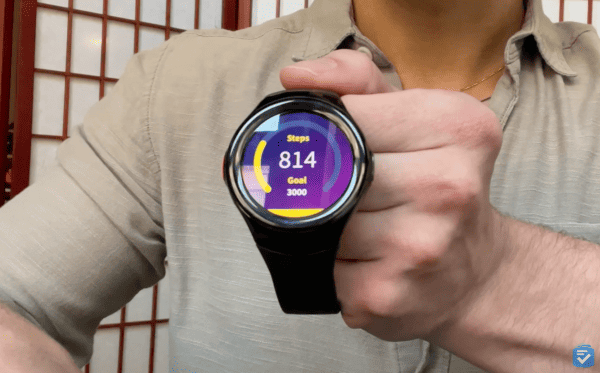
In terms of extra features, the SOS Smartwatch lacks messaging capabilities, making it a bit more limited than the MGMove. It does, however, include automatic fall detection. In our 20 simulated test falls, this watch detected 15 of them, which is about average in terms of accuracy for fall-detection devices.
Drawbacks
What disappointed me most about this watch was its battery life of 14 hours. While this is long enough to get through the day, this was the lowest battery life of any watch I tested. Ideally, I’d like for a user to be able to occasionally forget to charge their watch and still go about their day.
Costs
Like most of the watches on this list, the SOS Smartwatch comes with two primary costs: The watch itself costs $199, and the monthly monitoring subscription costs $39.95. Fall detection costs an extra $10 per month, but this feature is optional.
>> Read More About: Bay Alarm Medical Costs
Our Verdict
Although it lacks the advanced caregiver features of the MGMove, the SOS Smartwatch consistently gave us a quick connection with urgent response agents. This, combined with its reliable fall detection, makes it worth your while.
>> Learn more about this watch: SOS Smartwatch Review
Pros
- Reliable monitoring
- 16-hour battery life
- Step counter
- Lower monthly costs
- Fall detection
- Dedicated urgent-response button
Cons
- Not fully waterproof
2. MGMove Watch - Best Overall

800-520-5889
What We Like Most:
- Weather forecast
- Text-to-speech messaging
- Companion phone app
- Emergency assistance button
Overview
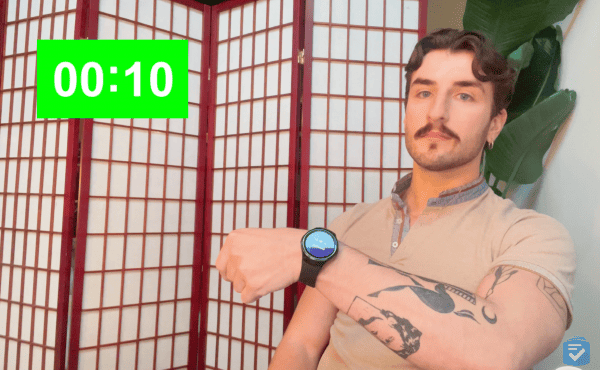
Cost: $199.95 equipment charge; $42.95 per month for monitoring
Battery life: 20 hours
Average response time: 10 seconds
Medical Guardian has long been one of our favorite medical alert providers, and its latest medical alert watch, the MGMove, lives up to the company’s reputation. In addition to giving us access to Medical Guardian’s monitoring center, the MGMove also tracked our steps, reported on the weather, and communicated with our loved ones.
>> Read More: Medical Guardian Systems Review
Performance
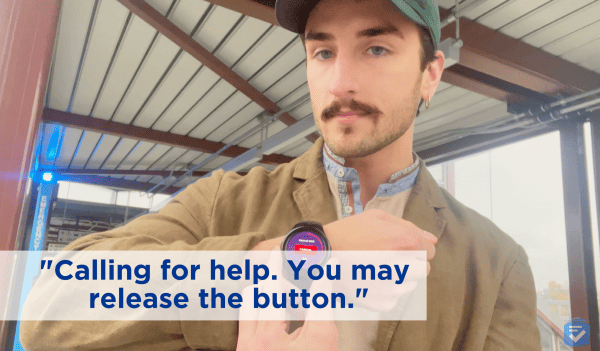
Of all the medical alert watches we tested, the MGMove had the fastest response times, with an average of ten seconds overall. No matter where I tested the watch, at home, in the city, or on hikes through the woods, I found that the MGMove consistently connected me to urgent response agents in a rapid manner. Communicating with response agents was also a breeze through the MGMove’s voluble speakerphone.
Additionally, in each of my GPS test calls, I found that Medical Guardian response agents could accurately report my street address and nearby landmarks. For example, when I placed a test call at my local train station, the agent reported not only my street address but also that of the adjacent Portuguese bakery.
This is why I would trust the MGMove to keep my loved ones safe.
Extra Features
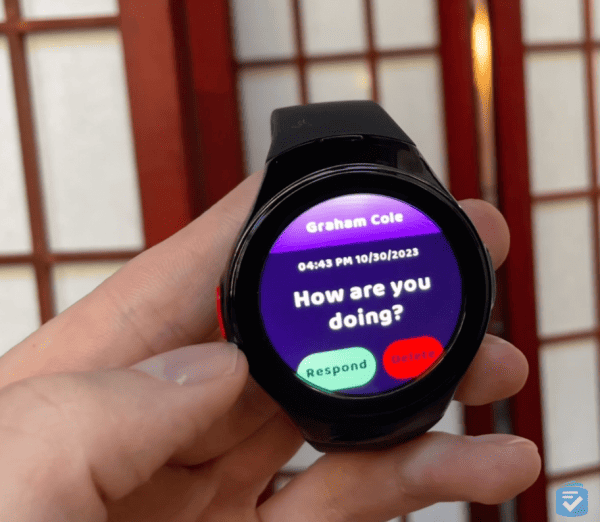
Urgent response aside, the MGMove also includes a pedometer and a weather app. This watch also offers two key features through the MyGuardian portal (available on both smartphones and desktop computers). Through this portal, loved ones could send my text or voice messages directly to my watch. Using the watch, I could view the messages and respond with a voice message of my own.
Also available through the caregiver portal was the reminders feature. This allowed loved ones to create customized reminders that appear on my watch at designated times. For example, I set a daily medication alarm at 10 a.m. Each day, at 10 a.m., my watch pinged, reminding me to take my daily aspirin.
Drawbacks
The biggest drawback of the MGMove was that it lacked any type of fall detection, which is becoming a standard feature on most medical alert watches. Additionally, while the weather and pedometer features come standard with the watch, the reminders and messaging features cost an additional $5 per month. This, I found annoying, as other watches on this list include all of their features for no extra cost.
Costs
The MGMove consists of two primary costs. The watch itself costs $199.95, and the monthly monitoring costs $42.95 per month. On top of this, you might pay an extra $5 per month for messaging and reminder features.
>>Learn More About: Medical Guardian Costs
Our Verdict
Despite the extra costs to use all of the MGMove’s features, there was no other watch on this list with faster response times. Couple these with an accurate GPS, and you get one of the best ways to protect your loved ones, both in and out of the home.
To learn more about the watch, read our full MGMove review.
Pros
- Speech-to-text messaging
- Accurate GPS
- Simple, intuitive design
- Quick response times
- Caregiver communication features
- 20-hour battery life
Cons
- Higher costs
- No fall detection
3. UnaliWear Kanega Watch - Best Fall Detection

What We Like Most:
- Sleek and stylish
- Fast response times
- Fall detection included
- Round-the-clock wear:

Overview
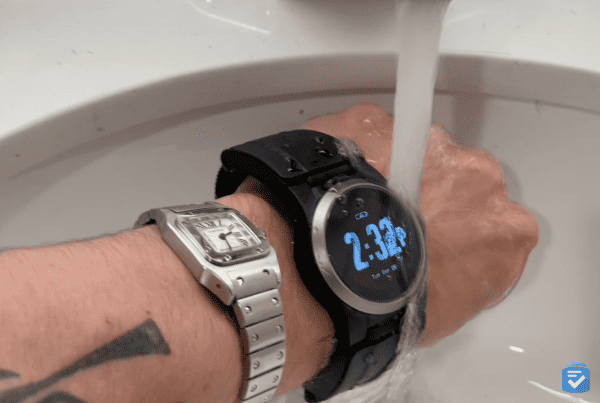
Cost: $299 setup fee; $69.95 per month for monitoring
Battery life: 32 hours
Average response time: 30 seconds
A newcomer in the world of medical alert systems, UnaliWear recently launched its Kanega Watch. With this watch, you won’t find caregiver apps, step counters, or messaging features. What you will find, however, is reliable monitoring and accurate fall detection.
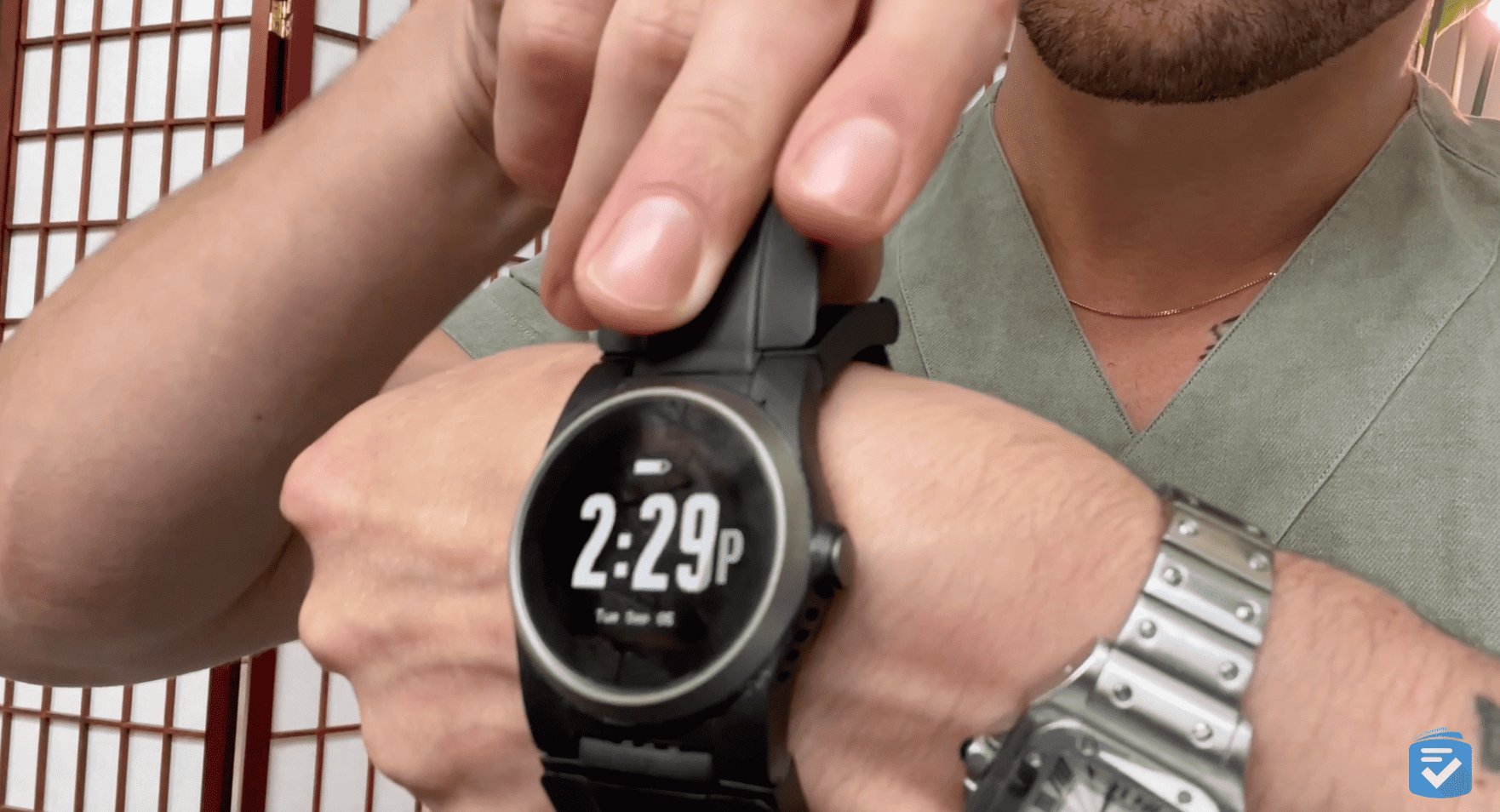
Performance
In our tests, the Kanega watch worked well in terms of response times, fall detection, and its overall durability. In our ten test calls, monitoring agents answered our call in an average of 30 seconds. I should note, however, that on two occasions, the monitoring agents were unable to detect my exact location. While this could be related to a lack of service by the park I went to, the other watches did not give me this issue in the same location.
Where the Kanega Watch excelled was in its battery life. It lasted 32 hours on a single charge. On top of this, this watch has a unique system of batteries that allowed me to keep the watch on even while I was charging the extra batteries.
Extra Features
While fall detection was the main event with this watch––and it worked well, detecting 15 out of 20 test falls––I was also pleased with the added medication reminder feature. While the Kanega watch did not have a caregiver portal, I contacted their customer service line and was able to set up 10 a.m. reminders for my daily aspirin.
The Kanega Watch also supported voice-activated calls. By saying the wake word, Fred Astaire (No joke, that is actually the wake word), I could place an emergency call, hands-free.
>>Further Reading: The Best Voice-Activated Medical Alert Systems
Drawbacks
Along with high costs, the Kanega Watch’s biggest drawback would have to be its lack of caregiver connectivity. There is no app here that allows loved ones to communicate with or track the location of this watch.
Costs
The Kanega Watch costs a one-time $299 for the watch and a monthly $69.95 for monitoring. The costs can be reduced if you pay an upfront $918.40 for the watch and one year of monitoring; however, I don’t anticipate many seniors will want to shell out so much.
No matter which way you slice it, this watch is easily the most expensive medical alert watch we’ve reviewed
Our Verdict
If price is of no concern, then the Kanega watch’s reliable monitoring and durability definitely make it worth the cost of entry.
>> Keep Reading: Kanega Watch Review
Pros
- Long battery life
- Accurate fall detection
- Watch can be worn 24/7
- Quick response times
- Simple design
Cons
- High costs
- Limited features
What Is a Medical Alert Watch?
A medical alert watch combines the urgent-response features of a medical alert system with the discreet package of a wristwatch. Using a medical alert watch, you can press a button and quickly get in touch with help, whether it comes from emergency medical services or a loved one.
Many medical alert watches also have extra features, including fall detection, step counters, heart-rate monitors, and apps that allow you to communicate with caregivers. Only the best medical alert watches, however, are fit to protect you or your loved ones.
>>Read More: The Best Fall Detection Devices
In this rundown of the best medical alert watches for seniors, we list our five favorite medical alert watches for seniors. After testing over a dozen different devices, we found the ones that offer the best protection for reasonable prices.
Pro Tip: Looking for medical alerts from $20 per month? Check out our rundown of the best medical alert systems for seniors.
Medical Alert Watches vs. Smartwatches
The line between smartwatches and medical alert watches is becoming blurrier, but there is one primary difference: A medical alert watch will give you 24/7 access to an urgent-response call center. A smartwatch, on the other hand, can only contact 911. Although 911 operators can be helpful, they won’t have access to your name, location, or medical information.
>>Looking for a smartwatch? The Best Smartwatches for Seniors

Medical alert watches will relay your name, GPS location, medical information, and even emergency contacts to monitoring center agents, which allows them to provide a more effective response in the event of an emergency. While some medical alert watches are smartwatches, not all smartwatches are medical alerts.
To learn more about how medical alert monitoring is different from calling 911, watch this quick video.
The Benefits of Medical Alert Watches
Broadly speaking, a medical alert watch works the same as a medical alert bracelet. They both provide 24/7 access to urgent-response monitoring centers. There are, however, three primary differences between the devices.
First is discretion. Medical alert bracelets tend to be made of silicon, but medical alert watches have the form factor of a smartwatch. That makes them ideal for users who don’t want to be seen wearing a medical device.
The second is built-in GPS. Medical alert bracelets are usually made for use in the home, but medical alert watches have a built-in GPS that allows them to be taken outside. With the GPS, monitoring agents can trace your location and send help to the right place.
Third are the extra features. In addition to reporting the time — something medical alert bracelets can’t do — a medical alert watch may have any of the following features:
- Step counters
- Heart rate monitors
- Apps for caregiver communication
- Voice commands
- Automatic fall detection
How to Choose the Right Medical Alert Watch
Beyond the five options above, there are many different medical alert watches on the market, so it is important to choose one that is right for your individual needs. Here are a few factors to consider when choosing a medical alert watch:
- Features: Medical alert watches offer a variety of features, such as fall detection, GPS location tracking, medication reminders, and activity tracking. Consider which features are most important to you and your loved ones.
- Ease of use: Medical alert watches should be easy to put on and take off, and the buttons should be easy to press. The watch should also be comfortable to wear all day long.
- Battery life: Medical alert watches should have a long battery life so that you can rely on them in an emergency.
- Price: Medical alert watches can range in price from a few hundred dollars to over a thousand dollars. Choose a watch that fits your budget.
- Water resistance: The shower is one of the most frequent sites of falls, so you’ll ideally want a medical alert watch that can withstand water. We recommend looking for a watch with a minimum rating of IP67 water resistance.
- Caregiver access: Some medical alert watches allow caregivers to track your location and receive alerts if you need help. Consider this feature if you have loved ones who want to be involved in your care.
- Comfort: As with any medical alert system, it’s useless if your loved one won’t wear it. We recommend choosing a watch with a return policy, so you can find out if your loved one likes it before committing.
Medical Alert Watch vs. Apple Watch
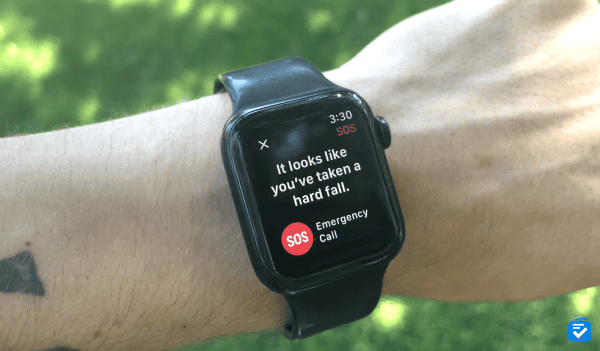
As many of our readers have pointed out, Apple Watches now have fall detection, a feature commonly associated with medical alerts; however, as of now, we would not recommend substituting a medical alert watch with an Apple Watch, regardless of the model. Here’s why.
Urgent Response vs. 911
If you use fall detection on an Apple Watch, and your device detects a fall, it will automatically call 911. The issue with this is that 911 operators won’t be able to access your location. So particularly for older adults, who may not be able to speak on the phone following a fall, a 911 operator may not be able to help them.
With a medical alert watch, an urgent response call center will already have your address, a list of emergency contacts, and a chain of command. For example, an urgent response agent, upon receiving your call and hearing no response, may contact a neighbor to perform a wellness check.

Simplicity
While many users (including this writer) find use in the advanced health tracking features of an Apple Watch, all of these features can lead to confusion. Naturally, seniors are not a monolith, but in many cases, Apple Watches are a bit too feature-rich for less savvy users.
Separate Phone and Plan Required
Medical alert watches are self-contained devices, meaning no additional devices are required to use them. Apple Watches, however, require both an additional iPhone and a cellular plan to use. So while older Apple Watch models are relatively affordable, you also must also factor in the cost of an iPhone and a data plan.
To learn more about the medical alert features of Apple Watches, read my guide: Medical Alert Systems vs. Apple Watches.

